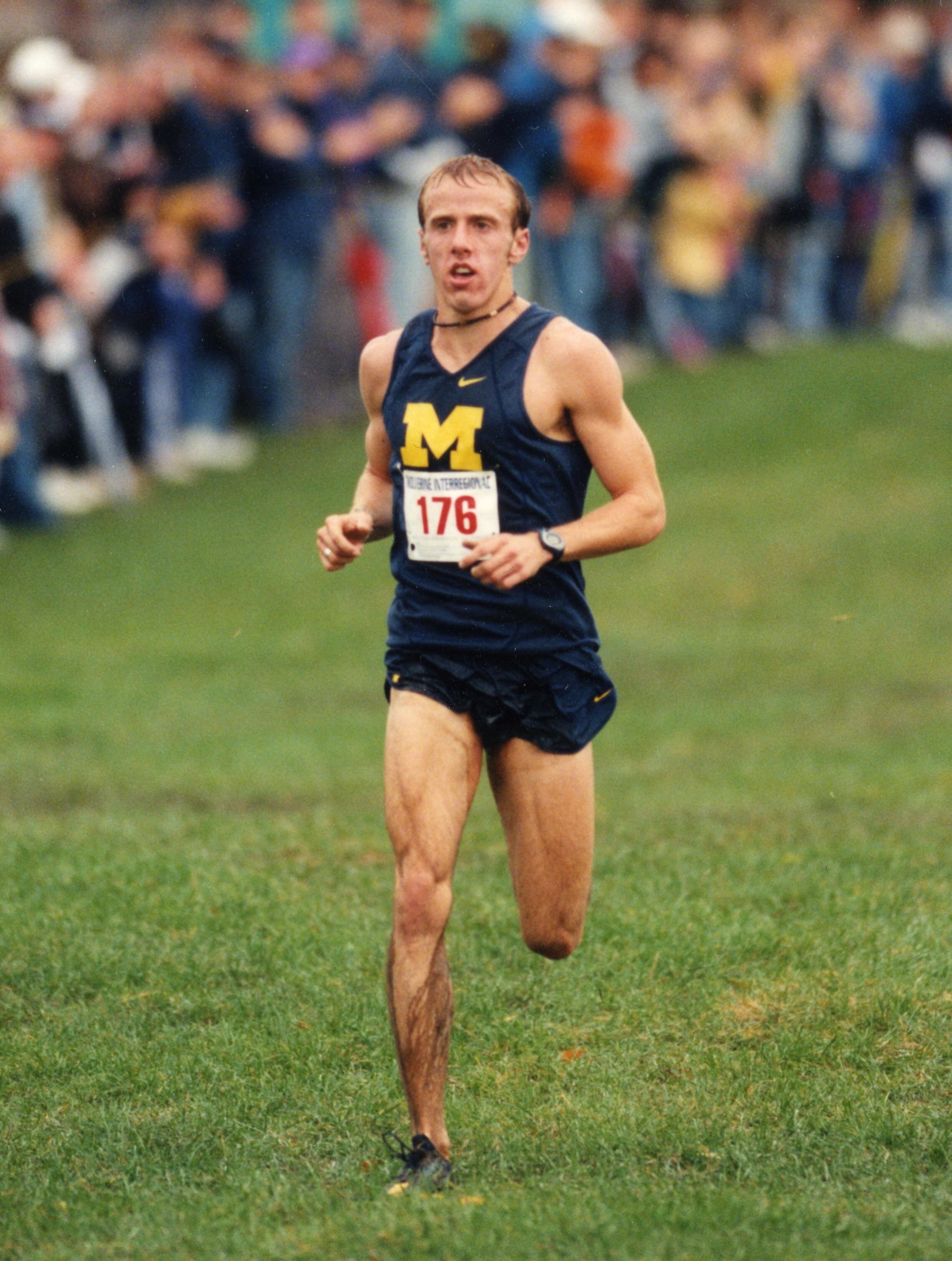Stamina Extension for XC
1 x 2 Mile, 3 x 1 Mile
Splits:
2 Mile — 9:56
1 Mile — 4:49, 4:47, 4:45
Recovery: 3’ after the 2M and 2’ between each 1M rep
Performed by Alan Webb — Oct.18.2006
Context & Details
Coming into this workout Alan had 6 weeks of consistent, injury-free training. His weekly volume was steady at 70 - 80 miles and his weekly workout rhythm was simple, consistent and effective.
It’s nothing impressive, but many important training qualities are visited frequently. In many ways, the brilliance of his training pattern lies in it’s eloquent simplicity. Kudos to Scott Razco on this design — I believe him to be one of the top 3 US middle distance coaches in the last 20 years (John Cook and Vin Lananna are my other 2 picks).
This is what a typical training week looked like for Alan in the fall of 2006:
Mondays: Recovery run + six reps of what I’ll call “medium speed” (roughly 800m - 400m pace) in 100m up to 200m segments.
Tuesdays: The first of two main running workouts of the week, typically a session that had a stamina extension theme, like the one offered in this post.
Wednesdays: Double recovery runs.
Thursdays: An 8 - 10 mile medium long run at a manageable pace for Alan, about ~6:00/mile clip.
Fridays: Longer broken tempos, such as 2 x 2Mile or 3 Mile, 2 Mile at ~ 5:00/mile pace.
Saturdays: 50 minute recovery run.
Sundays: Longer run, 12 - 13 miles in 75 - 80 minutes.
That’s it for the running workloads.
Below is a snapshot of Alan’s fall 2006 training log from the week which this workout came:
You’ll want to pay special attention to the Pedestal, General Strength (GS), Plyos, Weight Training, and Hurdle Mobility routines which populated his training menu every single day. There wasn’t a day where he didn’t both run and do a fair amount of ancillary work.
Alan always viewed himself as an “athlete who ran” — and his logs prove it.
Ancillary work was the “secret” to what made him a brillant runner. Alan in his prime was strong, powerful, and coordinated. His brain was so well versed in creating solutions to demanding athletic situations due to years of steady exposure to varied ancillary work. At his peak, Alan could run as fast and as often as he did because of the years he invested doing this non-running work.
Again, kudos to Coach Razco for understanding the importance and impact of this type of work for runners. He was far ahead of his time.
Specifically, Stamina Extension workouts are designed to increase the distance a runner can run at race speed (or velocity) without excessive fatigue slowing him/her down.
Alan ran the Mayor’s Cup 8K XC race on Oct. 22nd in Boston — 4 days after this session. I’ll guess this exact workout was more sustaining in nature, both of his confidence and current fitness. So I don’t think it was designed to be too difficult for him. And judging by the 4 miles at 6:15/mile pace he ran later that day we can assume it wasn’t.
What I like about this session is the 2 Mile tempo fatigues the athlete slightly, but not excessively, before embarking on the repeat miles at desired race speed. With only 2 minutes recovery between the 1 Mile reps, the athlete enjoys a small break but nowhere near full recovery. I’d ballpark 2 minutes equating to being roughly 50% - 65% of full recovery. Being able to sustain the race speeds on the 2nd and 3rd rep is tough, but manageable. It requires an athlete to stay focused while tolerating an increasing degree of discomfort — much like in the final half of a race.
If I were coaching high school aged athletes, I might change the distances slightly to a 2K tempo followed by 3-4 x 1000m. Thematically the stimulus is the same and the overall workout volume becomes more appropriate for younger athletes to successfully complete whose race distance is 5,000m.
I suggest making this the main workout in a training week which features no race or placing it as early as possible in a training week which features a competition. I think it is wise to be prudent and air on the side of less volume for the 1M or 1000m reps at race speed than more. What matters here is the athlete learns how to sustain running at race speed while fatiguing, not giving into the fatigue and slowing down because the overall workout volume is too excessive for the velocities at which they’re being asked to run.
Questions?
Send me a Direct Message on Twitter.
Thx | @jmarpdx


